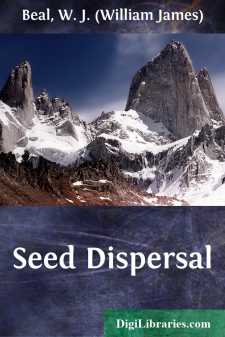Categories
- Antiques & Collectibles 13
- Architecture 36
- Art 48
- Bibles 22
- Biography & Autobiography 813
- Body, Mind & Spirit 142
- Business & Economics 28
- Children's Books 17
- Children's Fiction 14
- Computers 4
- Cooking 94
- Crafts & Hobbies 4
- Drama 346
- Education 46
- Family & Relationships 57
- Fiction 11829
- Games 19
- Gardening 17
- Health & Fitness 34
- History 1377
- House & Home 1
- Humor 147
- Juvenile Fiction 1873
- Juvenile Nonfiction 202
- Language Arts & Disciplines 88
- Law 16
- Literary Collections 686
- Literary Criticism 179
- Mathematics 13
- Medical 41
- Music 40
- Nature 179
- Non-Classifiable 1768
- Performing Arts 7
- Periodicals 1453
- Philosophy 64
- Photography 2
- Poetry 896
- Political Science 203
- Psychology 42
- Reference 154
- Religion 513
- Science 126
- Self-Help 84
- Social Science 81
- Sports & Recreation 34
- Study Aids 3
- Technology & Engineering 59
- Transportation 23
- Travel 463
- True Crime 29
Seed Dispersal
Categories:
Description:
Excerpt
CHAPTER I.
HOW ANIMALS GET ABOUT.
1. Most of the larger animals move about freely.—When danger threatens, the rabbit bounds away in long jumps, seeking protection in a hollow tree, a log, or a hole in the ground. When food becomes scarce, squirrels quickly shift to new regions. Coons, bears, skunks, and porcupines move from one neighborhood to another. When the thickets disappear and hunters abound, wild turkeys and partridges retreat on foot or by wing. When the leaves fall and the cold winds blow, wild geese leave the lakes in secluded northern homes, and with their families, reared during the summer, go south to spend the winter. Turtles swim from pond to pond or crawl from the water to the sand bank, where they lay and cover their eggs. Fishes swim up or down the creek with changing seasons, or seek deep or shallow water as their needs require. Beetles and butterflies, when young, crawl about for food and shelter, and when older use their wings in going long distances.
These examples only serve to recall to mind what every boy or girl knows and has known ever since he can remember—that most animals move about whenever they want to, or whenever other animals will let them.
2. Some animals catch rides in one way or another.—Some small animals, like lice, ticks, and tiny spiders, walk slowly and only for short distances. If, because of scarcity of food, they are suddenly seized with the desire to move for a long distance, what are they to do? On such occasions ticks and lice watch quietly the first opportunity, catch on to the feet of birds or flying insects or other animals which may happen to come their way, and, like a boy catching on to a farmer's sleigh, ride till they get far enough, then jump off or let go, to explore the surrounding country and see whether it is fit to live in. If for some reason a spider grows dissatisfied and wants to leave the home spot, she climbs to the top of some object and spins out a fine, long web; this floats in the air, and after a while becomes so long and light that the wind will bear the thread and the spinner for a considerable distance, no one knows how far. These facts about lice and spiders show how wingless insects can go long distances without wings of their own.
How is it with plants? The woods, fields, marshes, roadsides ever abound with interesting objects provided with strange devices waiting to be studied by inquisitive girls and boys in and out of school, and this finding out of nature's puzzles is one of the deepest pleasures of life.
How quickly a mould attacks and creeps or spreads through a basin of berries every one knows. The mould is as much a plant as the bush that produced the berries; it comes from a small spore, which takes the place of a bud or sprout or seed. The decay of a tree begins where a limb or root has been injured, and whether the timber is living or dead, this decay results from the growth of some one or more low forms of plant life which enter the timber in certain places and slowly or quickly penetrate and affect other portions more or less remote.
...


